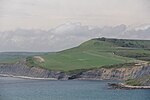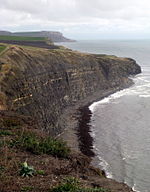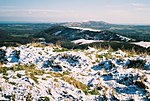Smedmore House
1620 establishments in EnglandCountry houses in DorsetGrade II* listed buildings in DorsetGrade II* listed houses

Smedmore House is a country house near Kimmeridge, Dorset, in England. It was originally built by Sir William Clavell around 1620, partially rebuilt by Edward Clavell around 1700, and greatly augmented by George Clavell around 1760. It is a Grade II* listed building. It is not normally open to the public, although there are regular open days and the House can be rented or hired for functions.
Excerpt from the Wikipedia article Smedmore House (License: CC BY-SA 3.0, Authors, Images).Smedmore House
Smedore & Swalland Private Road,
Geographical coordinates (GPS) Address External links Nearby Places Show on map
Geographical coordinates (GPS)
| Latitude | Longitude |
|---|---|
| N 50.6094 ° | E -2.1086 ° |
Address
Smedmore House
Smedore & Swalland Private Road
BH20 5PE , Kimmeridge
England, United Kingdom
Open on Google Maps









